Scott Makeig
EEG Foundation Challenge: From Cross-Task to Cross-Subject EEG Decoding
Jun 23, 2025Abstract:Current electroencephalogram (EEG) decoding models are typically trained on small numbers of subjects performing a single task. Here, we introduce a large-scale, code-submission-based competition comprising two challenges. First, the Transfer Challenge asks participants to build and test a model that can zero-shot decode new tasks and new subjects from their EEG data. Second, the Psychopathology factor prediction Challenge asks participants to infer subject measures of mental health from EEG data. For this, we use an unprecedented, multi-terabyte dataset of high-density EEG signals (128 channels) recorded from over 3,000 child to young adult subjects engaged in multiple active and passive tasks. We provide several tunable neural network baselines for each of these two challenges, including a simple network and demographic-based regression models. Developing models that generalise across tasks and individuals will pave the way for ML network architectures capable of adapting to EEG data collected from diverse tasks and individuals. Similarly, predicting mental health-relevant personality trait values from EEG might identify objective biomarkers useful for clinical diagnosis and design of personalised treatment for psychological conditions. Ultimately, the advances spurred by this challenge could contribute to the development of computational psychiatry and useful neurotechnology, and contribute to breakthroughs in both fundamental neuroscience and applied clinical research.
* Approved at Neurips Competition track. webpage: https://eeg2025.github.io/
Quantifying Data Requirements for EEG Independent Component Analysis Using AMICA
Jun 11, 2025Abstract:Independent Component Analysis (ICA) is an important step in EEG processing for a wide-ranging set of applications. However, ICA requires well-designed studies and data collection practices to yield optimal results. Past studies have focused on quantitative evaluation of the differences in quality produced by different ICA algorithms as well as different configurations of parameters for AMICA, a multimodal ICA algorithm that is considered the benchmark against which other algorithms are measured. Here, the effect of the data quantity versus the number of channels on decomposition quality is explored. AMICA decompositions were run on a 71 channel dataset with 13 subjects while randomly subsampling data to correspond to specific ratios of the number of frames in a dataset to the channel count. Decomposition quality was evaluated for the varying quantities of data using measures of mutual information reduction (MIR) and the near dipolarity of components. We also note that an asymptotic trend can be seen in the increase of MIR and a general increasing trend in near dipolarity with increasing data, but no definitive plateau in these metrics was observed, suggesting that the benefits of collecting additional EEG data may extend beyond common heuristic thresholds and continue to enhance decomposition quality.
Automatic EEG Independent Component Classification Using ICLabel in Python
Nov 20, 2024Abstract:ICLabel is an important plug-in function in EEGLAB, the most widely used software for EEG data processing. A powerful approach to automated processing of EEG data involves decomposing the data by Independent Component Analysis (ICA) and then classifying the resulting independent components (ICs) using ICLabel. While EEGLAB pipelines support high-performance computing (HPC) platforms running the open-source Octave interpreter, the ICLabel plug-in is incompatible with Octave because of its specialized neural network architecture. To enhance cross-platform compatibility, we developed a Python version of ICLabel that uses standard EEGLAB data structures. We compared ICLabel MATLAB and Python implementations to data from 14 subjects. ICLabel returns the likelihood of classification in 7 classes of components for each ICA component. The returned IC classifications were virtually identical between Python and MATLAB, with differences in classification percentage below 0.001%.
An Exploration of Optimal Parameters for Efficient Blind Source Separation of EEG Recordings Using AMICA
Sep 27, 2023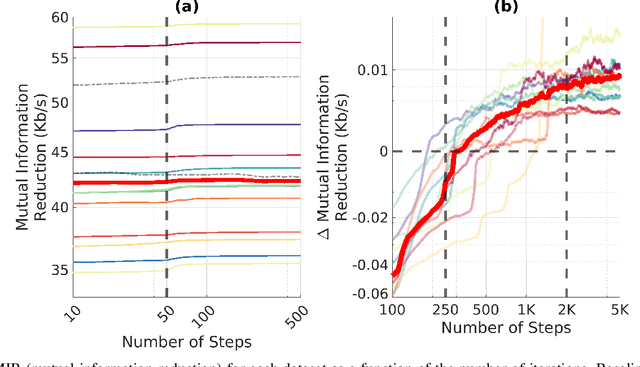
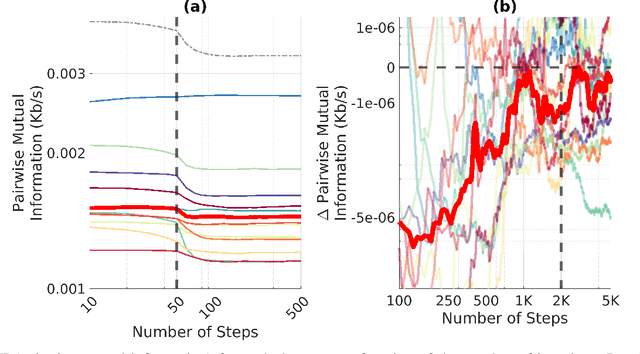
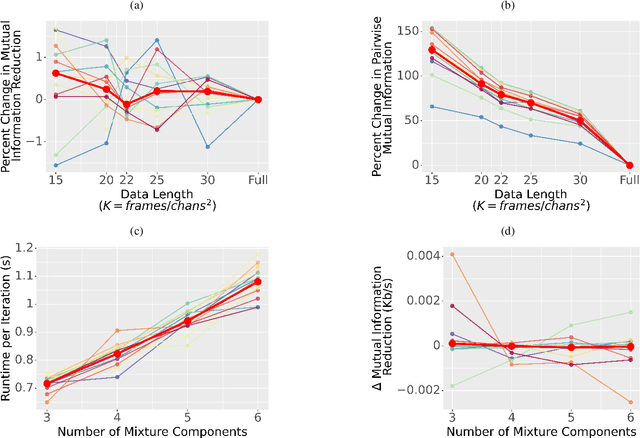
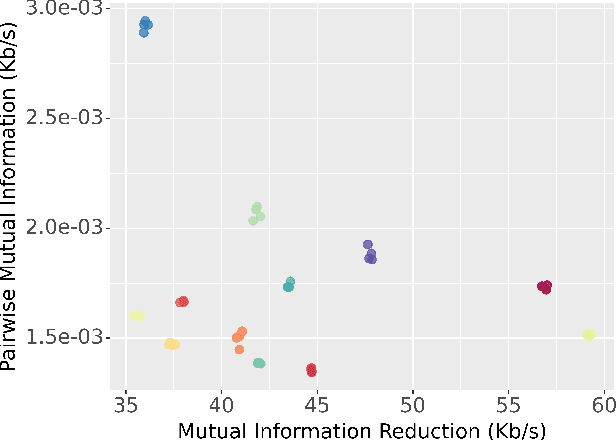
Abstract:EEG continues to find a multitude of uses in both neuroscience research and medical practice, and independent component analysis (ICA) continues to be an important tool for analyzing EEG. A multitude of ICA algorithms for EEG decomposition exist, and in the past, their relative effectiveness has been studied. AMICA is considered the benchmark against which to compare the performance of other ICA algorithms for EEG decomposition. AMICA exposes many parameters to the user to allow for precise control of the decomposition. However, several of the parameters currently tend to be set according to "rules of thumb" shared in the EEG community. Here, AMICA decompositions are run on data from a collection of subjects while varying certain key parameters. The running time and quality of decompositions are analyzed based on two metrics: Pairwise Mutual Information (PMI) and Mutual Information Reduction (MIR). Recommendations for selecting starting values for parameters are presented.
A Framework to Evaluate Independent Component Analysis applied to EEG signal: testing on the Picard algorithm
Oct 16, 2022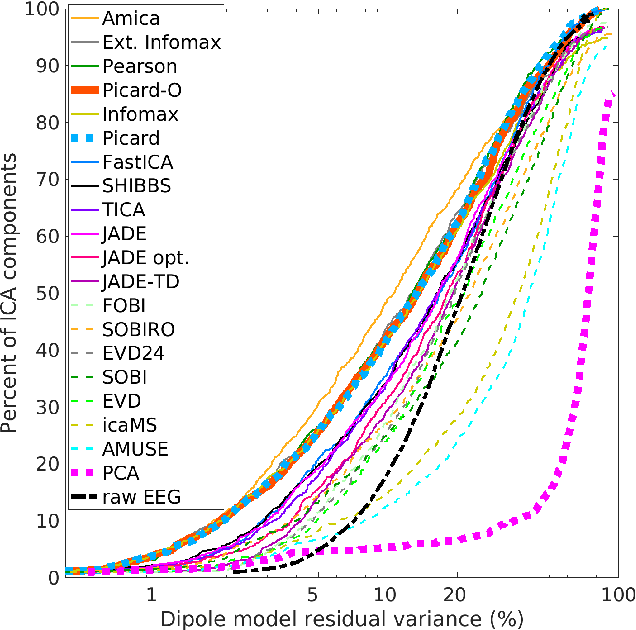
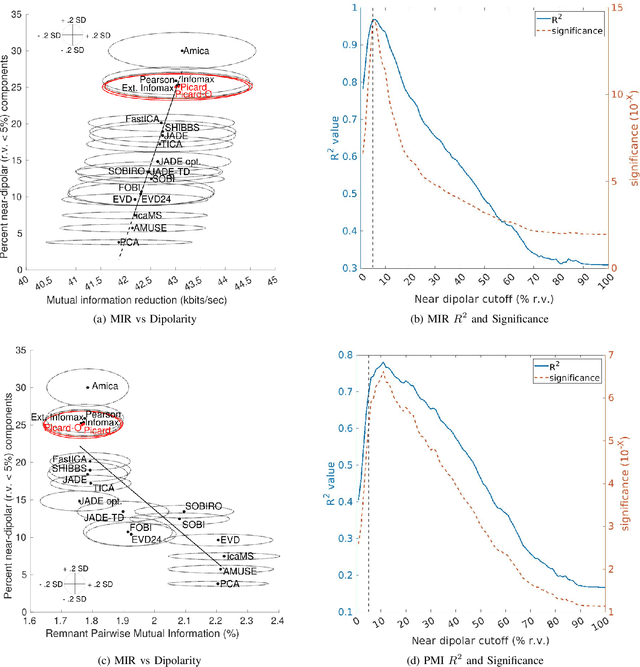
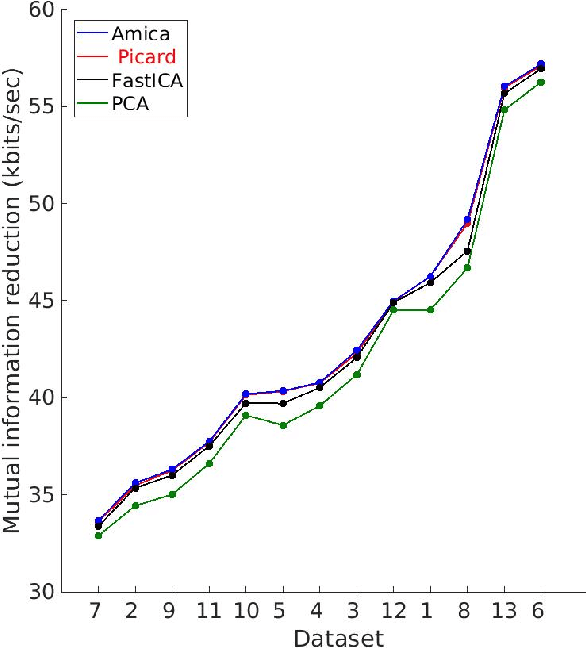
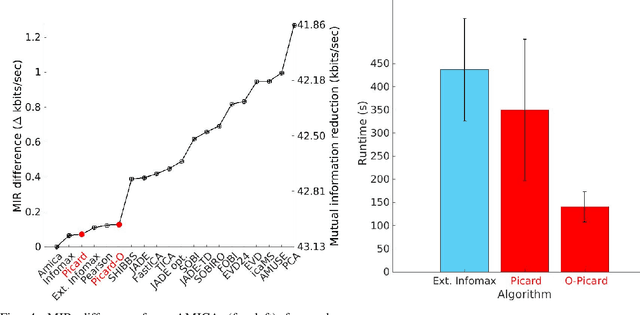
Abstract:Independent component analysis (ICA), is a blind source separation method that is becoming increasingly used to separate brain and non-brain related activities in electroencephalographic (EEG) and other electrophysiological recordings. It can be used to extract effective brain source activities and estimate their cortical source areas, and is commonly used in machine learning applications to classify EEG artifacts. Previously, we compared results of decomposing 13 71-channel scalp EEG datasets using 22 ICA and other blind source separation (BSS) algorithms. We are now making this framework available to the scientific community and, in the process of its release are testing a recent ICA algorithm (Picard) not included in the previous assay. Our test framework uses three main metrics to assess BSS performance: Pairwise Mutual Information (PMI) between scalp channel pairs; PMI remaining between component pairs after decomposition; and, the complete (not pairwise) Mutual Information Reduction (MIR) produced by each algorithm. We also measure the "dipolarity" of the scalp projection maps for the decomposed component, defined by the number of components whose scalp projection maps nearly match the projection of a single equivalent dipole. Within this framework, Picard performed similarly to Infomax ICA. This is not surprising since Picard is a type of Infomax algorithm that uses the L-BFGS method for faster convergence, in contrast to Infomax and Extended Infomax (runica) which use gradient descent. Our results show that Picard performs similarly to Infomax and, likewise, better than other BSS algorithms, excepting the more computationally complex AMICA. We have released the source code of our framework and the test data through GitHub.
Assessing learned features of Deep Learning applied to EEG
Nov 08, 2021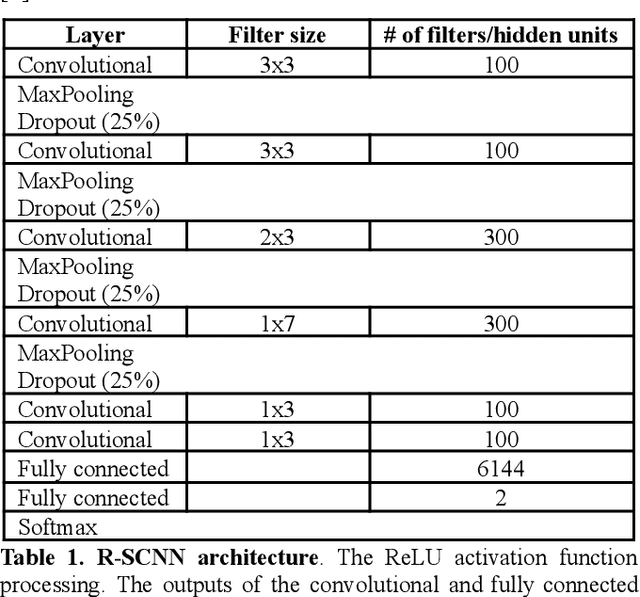
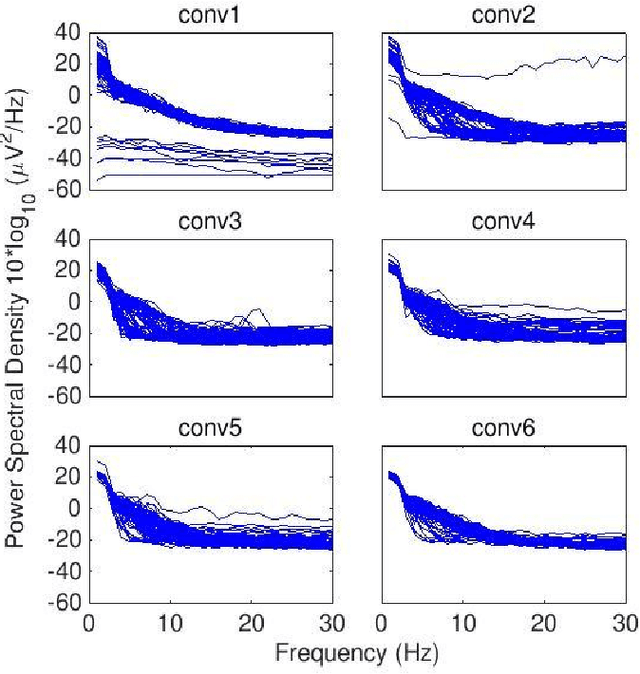
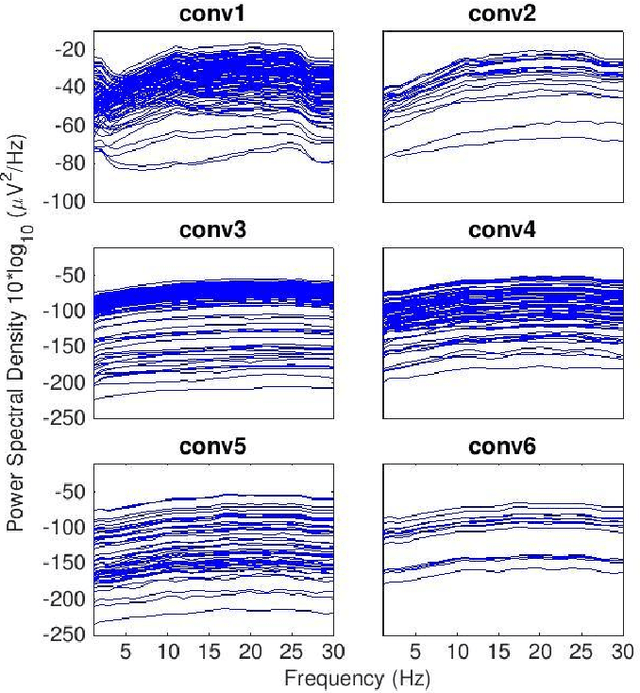
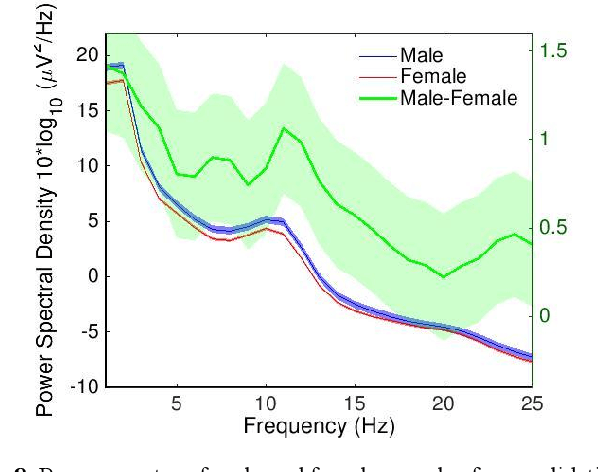
Abstract:Convolutional Neural Networks (CNNs) have achieved impressive performance on many computer vision related tasks, such as object detection, image recognition, image retrieval, etc. These achievements benefit from the CNNs' outstanding capability to learn discriminative features with deep layers of neuron structures and iterative training process. This has inspired the EEG research community to adopt CNN in performing EEG classification tasks. However, CNNs learned features are not immediately interpretable, causing a lack of understanding of the CNNs' internal working mechanism. To improve CNN interpretability, CNN visualization methods are applied to translate the internal features into visually perceptible patterns for qualitative analysis of CNN layers. Many CNN visualization methods have been proposed in the Computer Vision literature to interpret the CNN network structure, operation, and semantic concept, yet applications to EEG data analysis have been limited. In this work we use 3 different methods to extract EEG-relevant features from a CNN trained on raw EEG data: optimal samples for each classification category, activation maximization, and reverse convolution. We applied these methods to a high-performing Deep Learning model with state-of-the-art performance for an EEG sex classification task, and show that the model features a difference in the theta frequency band. We show that visualization of a CNN model can reveal interesting EEG results. Using these tools, EEG researchers using Deep Learning can better identify the learned EEG features, possibly identifying new class relevant biomarkers.
Deep Convolutional Neural Network Applied to Electroencephalography: Raw Data vs Spectral Features
May 11, 2021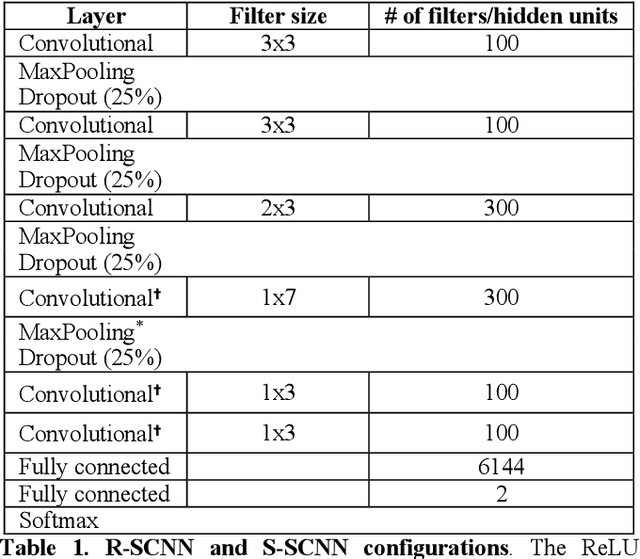

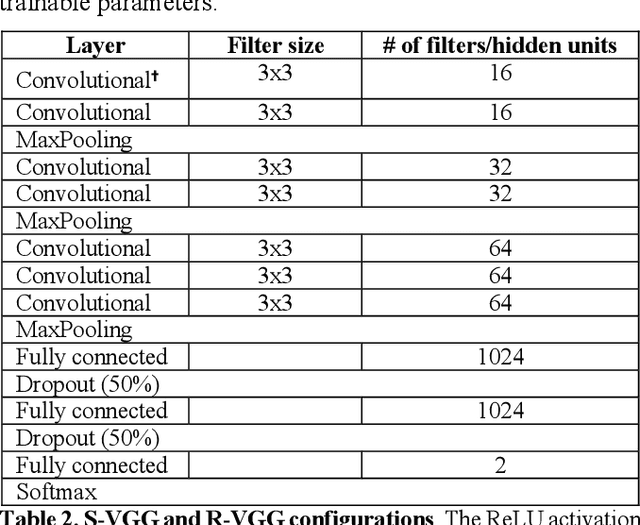
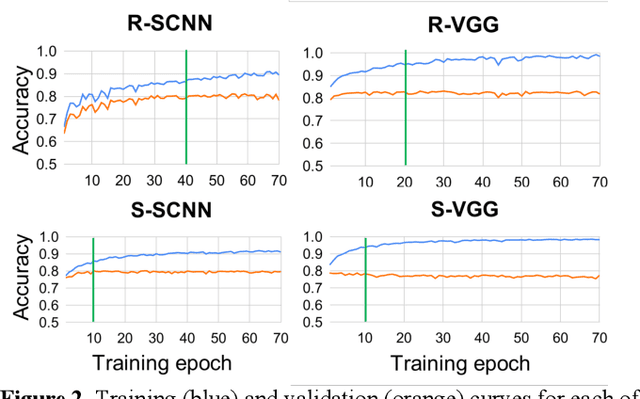
Abstract:The success of deep learning in computer vision has inspired the scientific community to explore new analysis methods. Within the field of neuroscience, specifically in electrophysiological neuroimaging, researchers are starting to explore leveraging deep learning to make predictions on their data without extensive feature engineering. This paper compares deep learning using minimally processed EEG raw data versus deep learning using EEG spectral features using two different deep convolutional neural architectures. One of them from Putten et al. (2018) is tailored to process raw data; the other was derived from the VGG16 vision network (Simonyan and Zisserman, 2015) which is designed to process EEG spectral features. We apply them to classify sex on 24-channel EEG from a large corpus of 1,574 participants. Not only do we improve on state-of-the-art classification performance for this type of classification problem, but we also show that in all cases, raw data classification leads to superior performance as compared to spectral EEG features. Interestingly we show that the neural network tailored to process EEG spectral features has increased performance when applied to raw data classification. Our approach suggests that the same convolutional networks used to process EEG spectral features yield superior performance when applied to EEG raw data.
ICLabel: An automated electroencephalographic independent component classifier, dataset, and website
Feb 04, 2019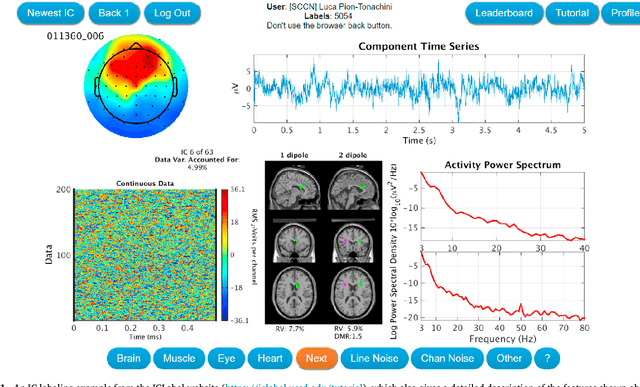
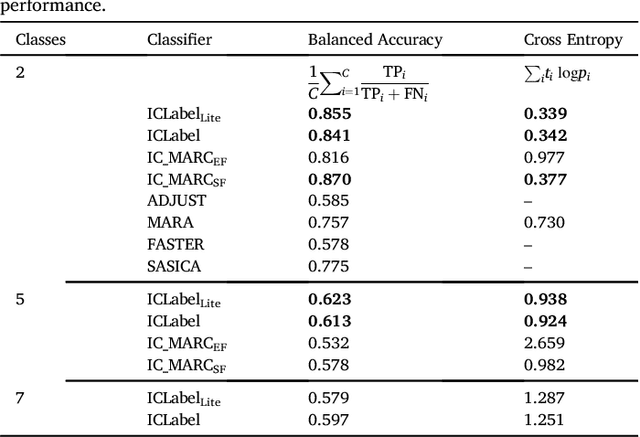
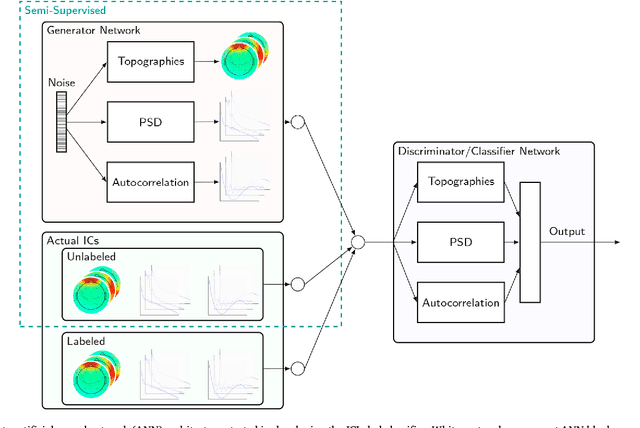
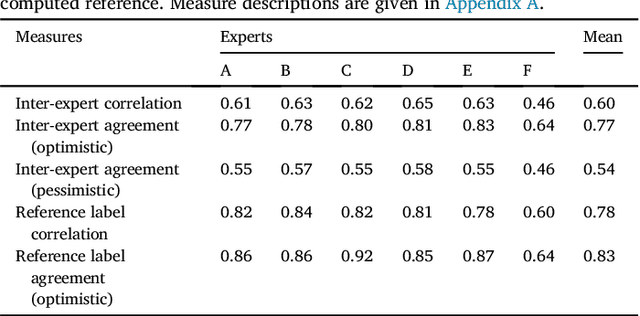
Abstract:The electroencephalogram (EEG) provides a non-invasive, minimally restrictive, and relatively low cost measure of mesoscale brain dynamics with high temporal resolution. Although signals recorded in parallel by multiple, near-adjacent EEG scalp electrode channels are highly-correlated and combine signals from many different sources, biological and non-biological, independent component analysis (ICA) has been shown to isolate the various source generator processes underlying those recordings. Independent components (IC) found by ICA decomposition can be manually inspected, selected, and interpreted, but doing so requires both time and practice as ICs have no particular order or intrinsic interpretations and therefore require further study of their properties. Alternatively, sufficiently-accurate automated IC classifiers can be used to classify ICs into broad source categories, speeding the analysis of EEG studies with many subjects and enabling the use of ICA decomposition in near-real-time applications. While many such classifiers have been proposed recently, this work presents the ICLabel project comprised of (1) an IC dataset containing spatiotemporal measures for over 200,000 ICs from more than 6,000 EEG recordings, (2) a website for collecting crowdsourced IC labels and educating EEG researchers and practitioners about IC interpretation, and (3) the automated ICLabel classifier. The classifier improves upon existing methods in two ways: by improving the accuracy of the computed label estimates and by enhancing its computational efficiency. The ICLabel classifier outperforms or performs comparably to the previous best publicly available method for all measured IC categories while computing those labels ten times faster than that classifier as shown in a rigorous comparison against all other publicly available EEG IC classifiers.
Spatiotemporal Sparse Bayesian Learning with Applications to Compressed Sensing of Multichannel Physiological Signals
Nov 15, 2014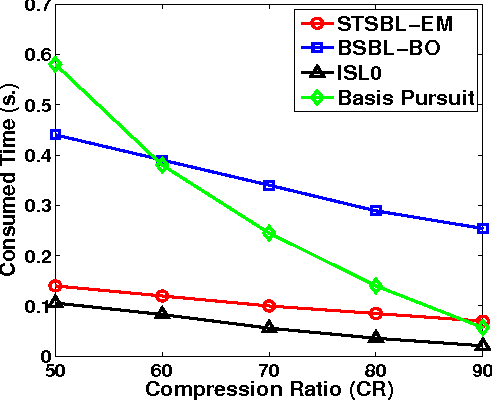
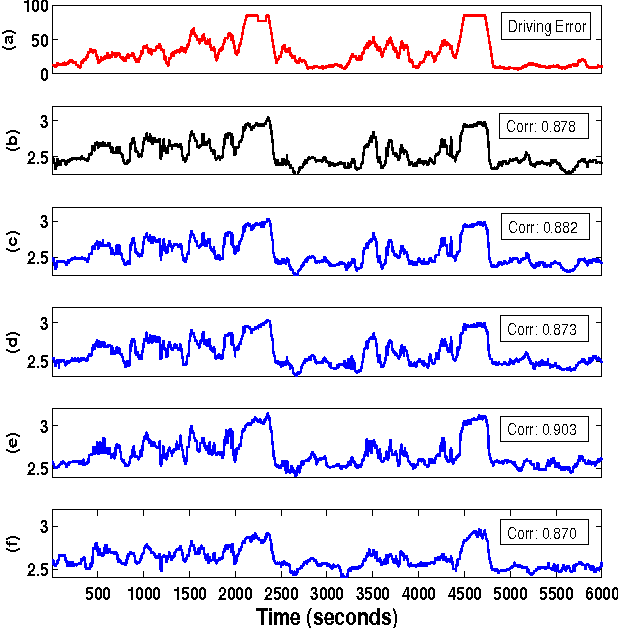
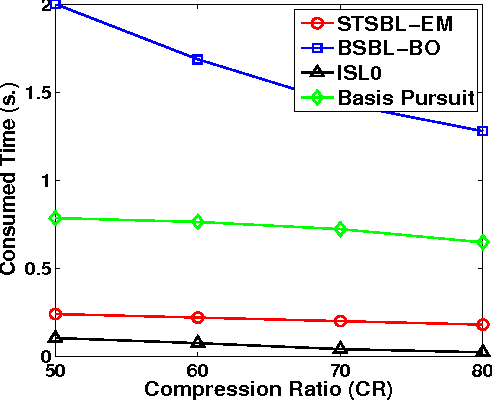
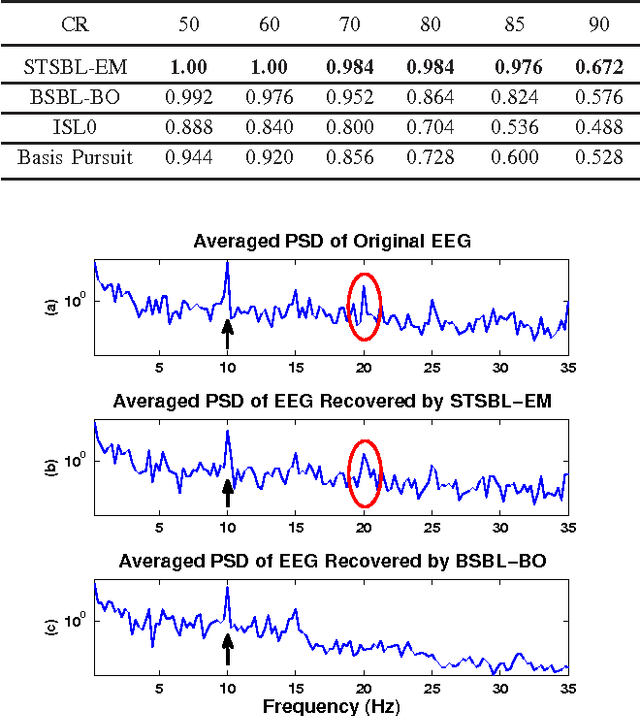
Abstract:Energy consumption is an important issue in continuous wireless telemonitoring of physiological signals. Compressed sensing (CS) is a promising framework to address it, due to its energy-efficient data compression procedure. However, most CS algorithms have difficulty in data recovery due to non-sparsity characteristic of many physiological signals. Block sparse Bayesian learning (BSBL) is an effective approach to recover such signals with satisfactory recovery quality. However, it is time-consuming in recovering multichannel signals, since its computational load almost linearly increases with the number of channels. This work proposes a spatiotemporal sparse Bayesian learning algorithm to recover multichannel signals simultaneously. It not only exploits temporal correlation within each channel signal, but also exploits inter-channel correlation among different channel signals. Furthermore, its computational load is not significantly affected by the number of channels. The proposed algorithm was applied to brain computer interface (BCI) and EEG-based driver's drowsiness estimation. Results showed that the algorithm had both better recovery performance and much higher speed than BSBL. Particularly, the proposed algorithm ensured that the BCI classification and the drowsiness estimation had little degradation even when data were compressed by 80%, making it very suitable for continuous wireless telemonitoring of multichannel signals.
* Codes are available at: https://sites.google.com/site/researchbyzhang/stsbl
Compressed Sensing of EEG for Wireless Telemonitoring with Low Energy Consumption and Inexpensive Hardware
Nov 02, 2014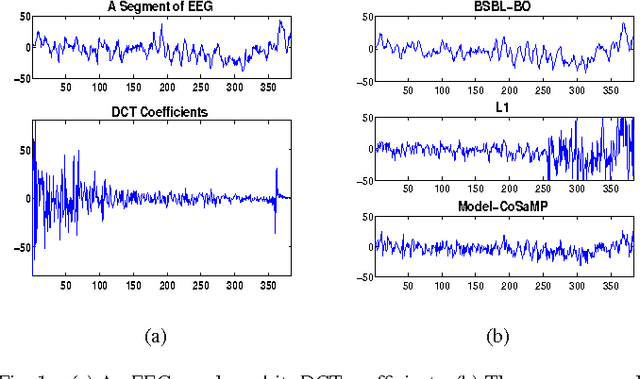
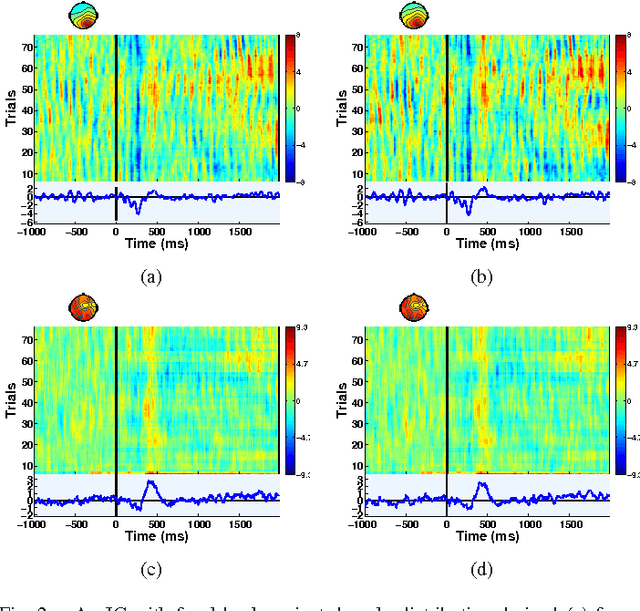
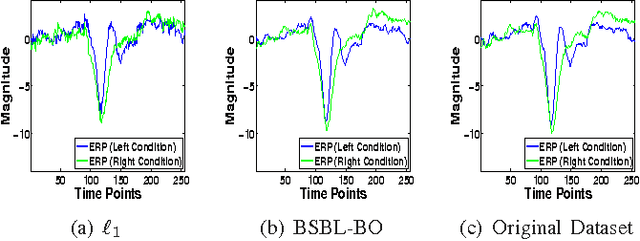

Abstract:Telemonitoring of electroencephalogram (EEG) through wireless body-area networks is an evolving direction in personalized medicine. Among various constraints in designing such a system, three important constraints are energy consumption, data compression, and device cost. Conventional data compression methodologies, although effective in data compression, consumes significant energy and cannot reduce device cost. Compressed sensing (CS), as an emerging data compression methodology, is promising in catering to these constraints. However, EEG is non-sparse in the time domain and also non-sparse in transformed domains (such as the wavelet domain). Therefore, it is extremely difficult for current CS algorithms to recover EEG with the quality that satisfies the requirements of clinical diagnosis and engineering applications. Recently, Block Sparse Bayesian Learning (BSBL) was proposed as a new method to the CS problem. This study introduces the technique to the telemonitoring of EEG. Experimental results show that its recovery quality is better than state-of-the-art CS algorithms, and sufficient for practical use. These results suggest that BSBL is very promising for telemonitoring of EEG and other non-sparse physiological signals.
 Add to Chrome
Add to Chrome Add to Firefox
Add to Firefox Add to Edge
Add to Edge